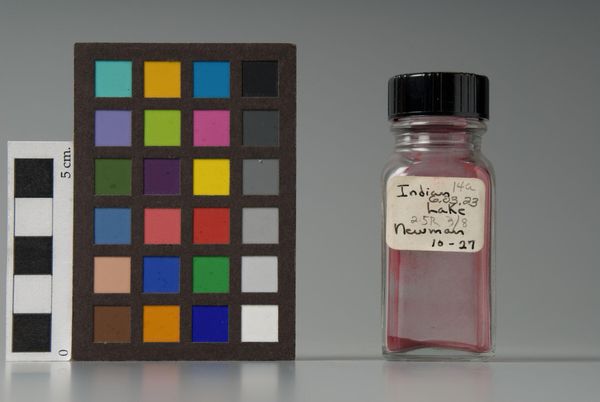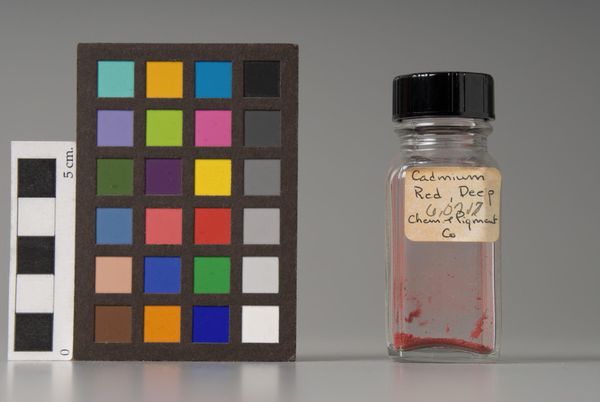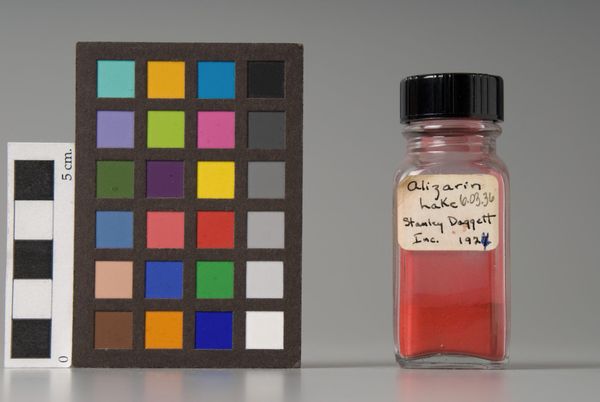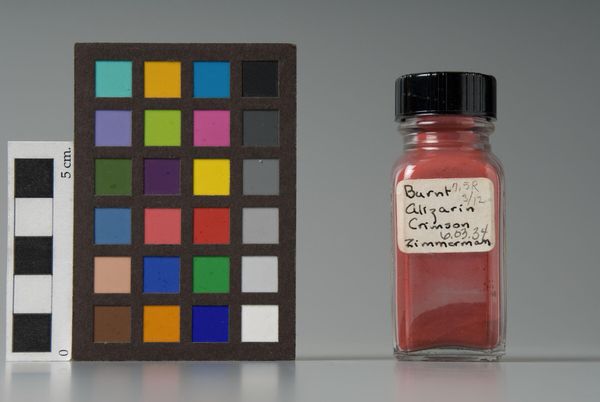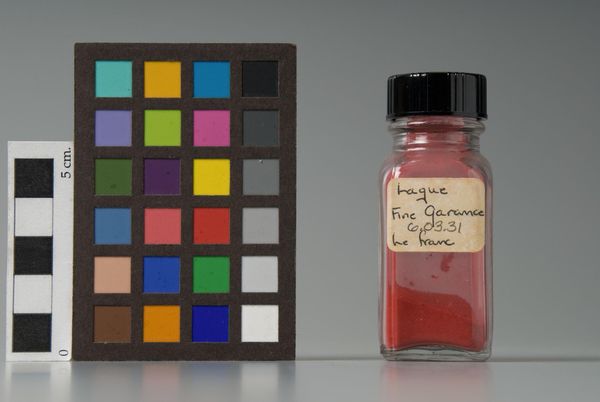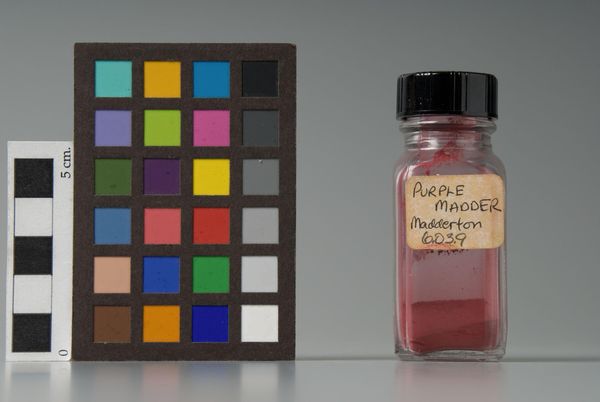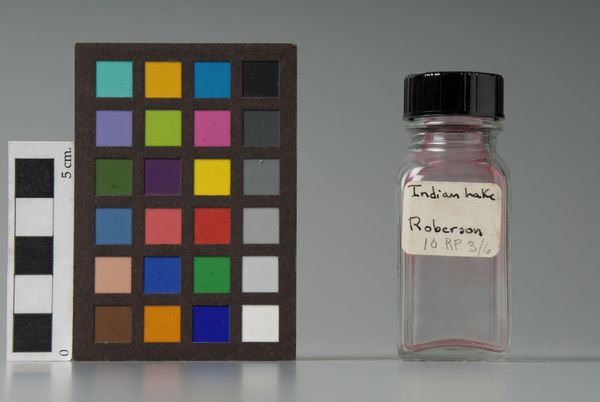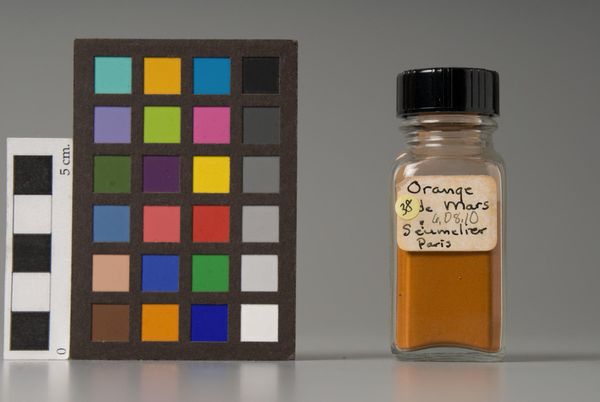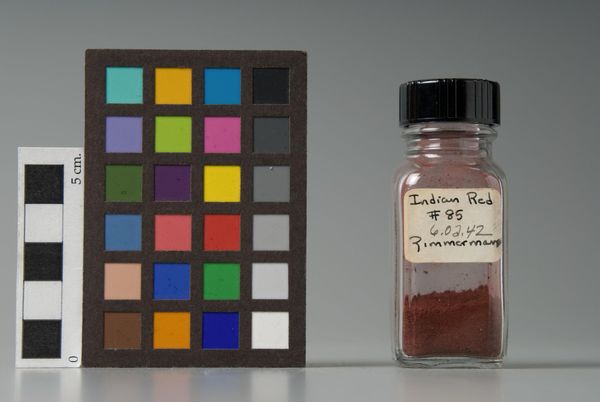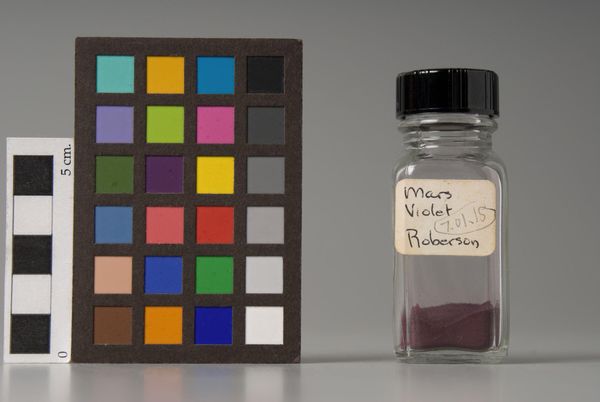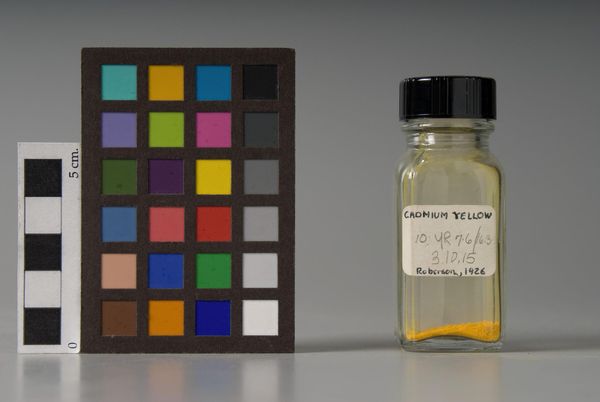
Copyright: CC0 1.0
Editor: Here we have Indian Lake, a pigment manufactured by Charles Roberson and Co., around 1926. It's striking how something so small could hold so much potential for artistic expression. What can you tell me about the historical context of pigments like this? Curator: Well, the history of pigments is deeply intertwined with colonialism and trade. "Indian Lake," implies an origin connected to the East. This pigment's availability reflects global trade routes and the demand for specific colors by artists, shaped by the institutions of art and the market. Editor: That's fascinating. So, the choice of materials themselves becomes a reflection of broader societal forces? Curator: Precisely. Even seemingly simple materials like pigments carry complex histories. How does this knowledge affect your view of the object? Editor: It makes me think about the power dynamics embedded within artistic practices, even at the level of the materials themselves. Curator: Exactly. Remembering the socio-political context enriches our understanding of art's role in society.
Comments
No comments
Be the first to comment and join the conversation on the ultimate creative platform.
